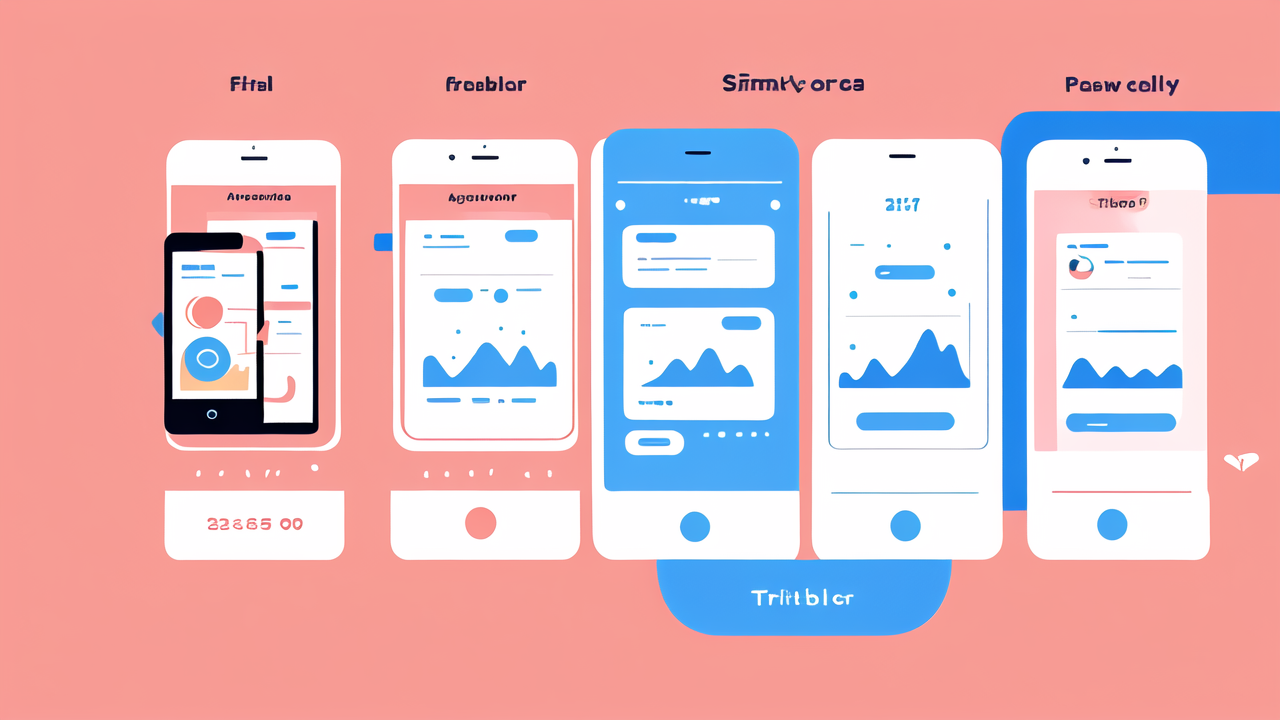The Rise of Fitness Tracking: A Look into the Market Evolution
Historical Overview of Fitness Tracking Devices
Fitness trackers have come a long way since their inception. Early devices were simple pedometers. They counted steps and little else. As tech advanced, so did these gadgets. The first modern fitness trackers hit the market in the early 2010s. They could track more than just steps. Heart rate, sleep patterns, and calories burned became standard features.

Brands like Fitbit and Jawbone led the charge. They made fitness tracking accessible to the masses. These early devices were basic but revolutionary. They gave users insights into their daily activity levels. This data was previously hard to track. As smartphones became ubiquitous, fitness trackers evolved to sync with them. This made data analysis easier and more comprehensive.
The Growth Trajectory of the Fitness Tracker Industry
The fitness tracker industry has seen explosive growth. From a niche market, it's become a multi-billion dollar industry. Sales have skyrocketed over the past decade. In 2014, about 29 million devices were sold worldwide. By 2020, this number had more than tripled. The US market has been at the forefront of this growth.
Several factors fueled this rapid expansion. Increasing health awareness played a big role. So did the rise of the quantified self movement. People wanted to track and improve their health metrics. Fitness trackers offered an easy way to do this. The industry also benefited from technological advancements. Devices became more accurate, feature-rich, and affordable.
Key Market Drivers and Consumer Adoption
Several key factors have driven the adoption of fitness trackers. Health consciousness is a major one. More people are prioritizing their well-being. Fitness trackers offer a tangible way to monitor health goals. They provide motivation and accountability. This appeals to many consumers.
Tech integration has also boosted adoption. Modern fitness trackers sync seamlessly with smartphones. This makes data analysis and sharing easy. Many devices now offer smartwatch features too. This adds value and convenience for users. Social elements have played a role as well. Many fitness trackers allow users to compete with friends. This gamification aspect has increased engagement and adoption rates.
Analyzing the Competitive Landscape of Fitness Trackers
Leading Brands and Their Market Strategies
The fitness tracker market is dominated by a few key players. Fitbit, Apple, and Garmin are among the top brands. Each has its own unique strategy to capture market share. Fitbit focuses on affordable, user-friendly devices. They target casual users and fitness enthusiasts alike. Apple integrates fitness tracking into its broader ecosystem. This appeals to their existing customer base.

Garmin targets serious athletes with advanced features. Their devices offer in-depth metrics for various sports. Samsung and Xiaomi are also significant players. They leverage their smartphone user base to promote their trackers. These brands compete on features, price, and ecosystem integration. Marketing strategies often highlight unique selling points. These may include battery life, accuracy, or exclusive apps.
Innovative Features That Set the Top Fitness Trackers Apart
Top fitness trackers stand out with innovative features. Advanced health monitoring is a key differentiator. Some devices now offer ECG readings and blood oxygen monitoring. Others track stress levels and provide guided breathing exercises. GPS tracking has become standard in high-end models. This allows for accurate pace and distance measurements during outdoor activities.
Battery life is another area of innovation. Some trackers now last weeks on a single charge. Water resistance has improved, with many devices suitable for swimming. Smart notifications and third-party app support are common in premium models. Some trackers even offer contactless payments. These features blur the line between fitness trackers and smartwatches.
Consumer Preferences and Market Segmentation
Consumer preferences in fitness trackers vary widely. This has led to market segmentation. Some users prioritize simplicity and long battery life. Others want advanced features and smartphone integration. Price points range from budget-friendly to premium. This caters to different consumer segments.
Health-focused individuals often choose trackers with advanced monitoring features. Athletes prefer devices with sport-specific metrics. Fashion-conscious users look for stylish designs. Some consumers prioritize ecosystem compatibility. They choose trackers that work well with their existing devices. Understanding these preferences helps brands target specific market segments.
Future Trends and Predictions for the Fitness Tracker Industry
Technological Advancements on the Horizon
The future of fitness trackers looks promising. Several technological advancements are on the horizon. Improved sensors will offer more accurate and diverse health metrics. We may see non-invasive glucose monitoring in the near future. This could be a game-changer for diabetics. Artificial intelligence will play a bigger role in data analysis. This could lead to more personalized health insights and recommendations.

Battery technology is also set to improve. We may see devices that can go months without charging. Some might even harness body heat or movement for power. Flexible displays could revolutionize tracker design. This would allow for larger screens without bulky devices. Integration with other smart devices will likely increase. Your tracker might soon control your smart home or car.
The Potential Impact of Health and Wellness Trends
Health and wellness trends will continue to shape the fitness tracker industry. The focus on mental health is likely to grow. We may see more features dedicated to stress management and mindfulness. Sleep tracking will become more sophisticated. Trackers might offer personalized sleep improvement plans.
Preventive healthcare is another important trend. Fitness trackers could play a key role in early disease detection. They might alert users to potential health issues before symptoms appear. Personalized fitness plans based on genetic data could become common. This would tailor recommendations to each user's unique physiology.
Predicting Changes in Consumer Behavior and Market Demands
Consumer behavior and market demands are likely to evolve. Privacy concerns may lead to increased demand for data protection features. Users might want more control over their health data. There could be a shift towards open platforms. This would allow users to easily switch between different brands.
Customization will likely become more important. Users may want to tailor their tracker's features and appearance. The line between fitness trackers and medical devices might blur. This could lead to increased regulatory scrutiny. Sustainability could become a key selling point. Consumers might prefer eco-friendly materials and repairable designs.
In conclusion, the fitness tracker industry continues to evolve rapidly. Technological advancements and changing consumer preferences drive this evolution. The future promises even more innovative features and applications. As these devices become more integral to our lives, their impact on health and wellness will only grow.




Leave a comment
This site is protected by hCaptcha and the hCaptcha Privacy Policy and Terms of Service apply.